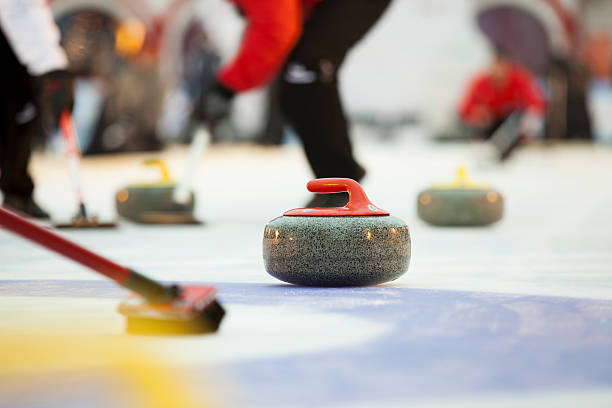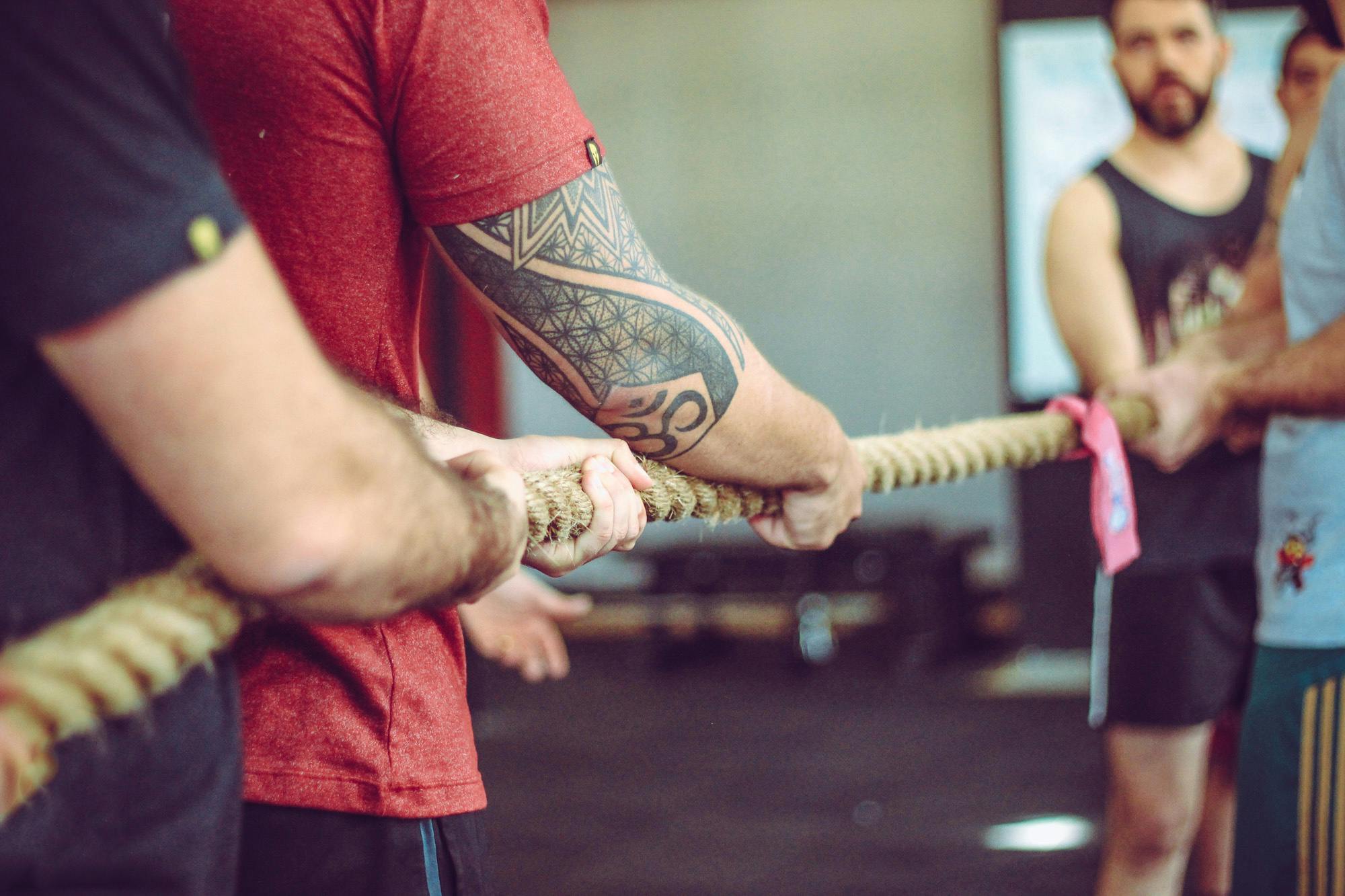Breaking the Ice: The Intriguing World of Curling
Imagine a sport where precision meets strategy on a sheet of ice, where sweeping becomes an art form, and where the roar of "hurry hard!" echoes through the arena. Welcome to curling, a sport that's been captivating audiences for centuries and is now experiencing a surge in global popularity. From its humble origins on frozen Scottish lochs to its status as an Olympic sensation, curling has evolved into a fascinating blend of athleticism, teamwork, and tactical brilliance.

As the sport gained popularity, it spread throughout Scotland and beyond. The first curling clubs were formed in the early 19th century, with the Grand Caledonian Curling Club (now known as the Royal Caledonian Curling Club) established in 1838. This organization played a crucial role in standardizing the rules and equipment used in curling, helping to transform it from a casual pastime into a structured competitive sport.
The sport’s popularity grew rapidly in countries with cold climates, particularly Canada, where Scottish immigrants introduced curling in the late 18th century. Today, Canada is widely regarded as the global powerhouse of curling, with the sport deeply ingrained in its national identity.
The Art and Science of the Perfect Curl
At its core, curling is a game of precision and strategy. Two teams of four players each take turns sliding granite stones weighing approximately 44 pounds (20 kilograms) across a sheet of ice towards a target area called the house. The objective is to have more stones closer to the center of the house than the opposing team at the conclusion of each end (similar to an inning in baseball).
What sets curling apart from many other sports is the intricate interplay between the thrower (or skip), who releases the stone, and the sweepers, who use brooms to influence the stone’s path and speed. The act of sweeping creates friction on the ice, which can extend the stone’s trajectory or alter its curl.
The physics behind curling is fascinating. The stone’s path is influenced by a phenomenon known as curl, caused by the stone’s rotation and the pebbled surface of the ice. This curl allows skilled players to navigate around guard stones and access tight spaces within the house.
The Mental Game: Strategy and Teamwork in Curling
While the physical aspects of curling are crucial, many consider the mental game to be equally, if not more, important. Curling is often referred to as “chess on ice” due to the complex strategies involved. Teams must constantly assess the position of stones on the ice, anticipate their opponents’ moves, and plan several shots ahead.
The skip, who acts as the team captain, plays a pivotal role in devising and executing strategy. They must make split-second decisions about shot selection, considering factors such as the score, the end being played, and the team’s strengths and weaknesses.
Effective communication and teamwork are essential in curling. The skip must clearly convey their intentions to the thrower and sweepers, while the sweepers must work in unison to execute the skip’s plan. This emphasis on collaboration and strategy makes curling a unique and engaging spectator sport.
Curling’s Olympic Journey and Global Expansion
Curling’s journey to becoming an Olympic sport was a long one. It was first included as a demonstration sport in the 1924 Winter Olympics in Chamonix, France. However, it would take another 74 years before curling was officially added to the Olympic program at the 1998 Nagano Games.
Since its inclusion in the Olympics, curling has experienced a surge in global popularity. The sport has expanded beyond its traditional strongholds in Scotland and Canada to countries such as China, Japan, and South Korea. This growth has been fueled by increased media coverage, particularly during the Winter Olympics, which has introduced the sport to new audiences worldwide.
The addition of mixed doubles curling to the Olympic program in 2018 has further boosted the sport’s appeal. This fast-paced variant, featuring teams of one man and one woman, has attracted new players and spectators with its dynamic gameplay and shorter match duration.
Innovation and Technology in Modern Curling
Like many sports, curling has embraced technological advancements to enhance performance and spectator experience. High-tech brooms with synthetic fabrics have replaced traditional corn brooms, allowing sweepers to exert more influence over the stone’s path. Precision-engineered stones and carefully prepared ice surfaces have increased the consistency and quality of play.
In recent years, data analytics has begun to play a significant role in curling strategy. Teams now use sophisticated software to analyze shot patterns, success rates, and opponent tendencies. This data-driven approach has led to more nuanced strategies and has raised the overall level of play in competitive curling.
For spectators, technology has enhanced the viewing experience. Broadcast innovations such as rock-tracking graphics and ice-surface heat maps provide viewers with a deeper understanding of the game’s intricacies. These advancements have made curling more accessible and engaging for casual fans and newcomers to the sport.
The Social Side of Curling: Sportsmanship and Community
One of curling’s most distinctive features is its strong emphasis on sportsmanship and fair play. The sport is governed by a code of ethics known as the “Spirit of Curling,” which emphasizes respect, honesty, and good sportsmanship. It’s common to see opposing teams socializing before and after matches, a tradition known as “broomstacking.”
This emphasis on camaraderie extends beyond the elite level. Curling clubs around the world serve as social hubs, bringing together people of all ages and backgrounds. Many clubs offer learn-to-curl programs, junior leagues, and social events, fostering a sense of community and making the sport accessible to newcomers.
The inclusive nature of curling is one of its greatest strengths. It’s a sport that can be enjoyed by people of all ages and fitness levels, making it a truly lifelong pursuit. From young children to seniors, curling offers a unique blend of physical activity, mental challenge, and social interaction.
Curling’s Environmental Considerations
As awareness of climate change grows, the curling community has been forced to confront the environmental impact of maintaining ice rinks. Many curling facilities are implementing energy-efficient cooling systems, LED lighting, and other green technologies to reduce their carbon footprint.
Some regions are also grappling with the effects of warming temperatures on outdoor curling. In Scotland, for example, the traditional outdoor Grand Match on a frozen loch has become increasingly rare due to milder winters. This has led to discussions about adaptation strategies and the importance of preserving curling’s heritage in a changing climate.
The Future of Curling: Challenges and Opportunities
As curling continues to grow globally, it faces both challenges and opportunities. One key challenge is maintaining the sport’s traditions and values while adapting to the demands of modern professional sports. The increasing commercialization of curling, particularly at the elite level, has led to debates about how to balance the sport’s amateur roots with the need for professional development and financial sustainability.
Another challenge is expanding the sport’s reach in non-traditional curling countries. While curling has made inroads in Asia and parts of Europe, it remains relatively unknown in many parts of the world. Efforts are underway to introduce curling in new markets, often through the use of synthetic ice surfaces that don’t require the same infrastructure as traditional ice rinks.
Despite these challenges, the future of curling looks bright. The sport’s unique blend of physical skill, mental acuity, and sportsmanship continues to attract new players and fans. Innovations in technology and training methods are pushing the boundaries of what’s possible on the ice, while the sport’s strong community ethos ensures it remains accessible and enjoyable for players of all levels.
Curling’s Impact Beyond the Ice
The principles and skills developed through curling often translate to other areas of life. The strategic thinking, teamwork, and decision-making skills honed on the ice can be valuable in professional and personal contexts. Many curlers speak of how the sport has taught them patience, resilience, and the importance of clear communication.
Curling has also been recognized for its potential therapeutic benefits. The sport’s low-impact nature makes it accessible to people with various physical limitations, and its social aspects can be particularly beneficial for mental health. Some healthcare professionals have even begun recommending curling as a form of physical and social therapy for certain patients.
In education, curling is being used as a tool to teach physics, geometry, and other STEM subjects. The sport’s reliance on principles such as friction, momentum, and angles makes it an excellent real-world application of these concepts. Some schools have incorporated curling into their physical education programs, recognizing its value in promoting both physical activity and critical thinking skills.
The Global Curling Community
One of the most remarkable aspects of curling is the strong sense of global community it fosters. Despite its competitive nature at the highest levels, curling maintains a spirit of friendship and mutual respect that transcends national borders. International bonspiels (curling tournaments) bring together players from around the world, promoting cultural exchange and understanding.
This global community has been instrumental in supporting the growth of curling in developing nations. Established curling nations often provide equipment, coaching, and other resources to help new curling programs get off the ground. This spirit of cooperation has helped curling expand its global footprint and increase diversity within the sport.
Social media and online platforms have further strengthened the global curling community. Curlers from different countries can now easily connect, share experiences, and discuss strategy. This has led to a cross-pollination of ideas and techniques, elevating the standard of play worldwide.
Curling and Gender Equality
Curling has long been at the forefront of gender equality in sports. It’s one of the few sports where men and women compete on equal terms at the highest levels. Mixed doubles, in particular, has been praised for its promotion of gender balance and partnership.
However, challenges remain. While participation rates are relatively balanced at the recreational level, there are still disparities in media coverage and sponsorship opportunities between men’s and women’s events at the elite level. The curling community is actively working to address these issues, with many organizations implementing initiatives to promote women’s leadership in the sport.
The introduction of mixed doubles as an Olympic discipline has also sparked discussions about gender roles within the sport. Some argue that the format reinforces traditional gender stereotypes, while others see it as an opportunity to showcase the complementary skills of male and female athletes.
Curling’s Cultural Impact
Beyond its status as a competitive sport, curling has made significant inroads into popular culture. The distinctive sight of athletes furiously sweeping the ice has become an iconic image of the Winter Olympics. Curling has been featured in movies, TV shows, and even video games, often as a source of humor but increasingly as a serious athletic pursuit.
This cultural visibility has had a positive impact on the sport’s growth. Many people who first encounter curling as a curiosity during Olympic broadcasts have gone on to become passionate players and fans. The sport’s unique terminology and traditions have also entered the broader lexicon in some curling-mad nations.
Curling has also inspired artists and designers. The geometric patterns created by stones in the house have been used in everything from fashion to architecture. Some artists have even created curling-themed installations, exploring themes of precision, strategy, and collaboration.
The Science of Ice Making in Curling
One often overlooked aspect of curling is the crucial role played by ice technicians, or “ice makers.” Creating and maintaining the perfect curling ice is a complex science that combines chemistry, physics, and meteorology.
Curling ice differs from hockey or figure skating ice in several key ways. It’s sprayed with water droplets to create a pebbled surface, which reduces friction and allows the stones to travel further and curl more predictably. The temperature and humidity of the arena must be carefully controlled to maintain consistent ice conditions throughout a match or tournament.
Recent advancements in ice-making technology have revolutionized the sport. Computerized systems now allow for precise control of ice temperature and pebbling patterns. Some facilities are experimenting with sensor-equipped stones that provide real-time data on ice conditions, allowing for even more refined ice preparation.
Curling as a Tool for Diplomacy
Throughout its history, curling has occasionally played a role in international diplomacy. The sport’s emphasis on fair play and sportsmanship makes it an ideal vehicle for fostering goodwill between nations.
One notable example occurred during the 2018 Winter Olympics in Pyeongchang, where a unified Korean women’s curling team competed. This team, comprising athletes from both North and South Korea, was seen as a symbol of potential reconciliation between the two nations.
Curling has also been used in cultural exchange programs and diplomatic initiatives. The World Curling Federation has partnered with various organizations to promote peace and understanding through sport, organizing friendly matches and coaching clinics in regions experiencing political tensions.
The Economic Impact of Curling
While not as commercially dominant as some other sports, curling can have a significant economic impact, particularly in smaller communities. Major curling events can attract thousands of visitors, boosting local tourism and hospitality industries.
In countries like Canada and Scotland, curling-related businesses form a notable niche industry. This includes manufacturers of curling equipment, specialized apparel brands, and companies that build and maintain curling facilities.
The sport has also created unique career opportunities. Professional curlers, coaches, ice technicians, and curling facility managers all contribute to a growing curling economy. As the sport continues to expand globally, these economic opportunities are likely to increase.
Curling and Inclusivity
Curling has made significant strides in becoming a more inclusive sport. Wheelchair curling, which became a Paralympic sport in 2006, has opened up competitive opportunities for athletes with mobility impairments. The sport is also becoming increasingly popular among visually impaired athletes, with modified equipment and rules allowing for their participation.
Efforts are also being made to increase racial and ethnic diversity within curling. Historically, the sport has been predominantly played by white athletes, particularly in its traditional strongholds. However, organizations around the world are implementing outreach programs to introduce curling to more diverse communities.
The curling community has also been proactive in addressing issues of LGBTQ+ inclusion. Many curling clubs and organizations have implemented policies to ensure a welcoming environment for all participants, regardless of sexual orientation or gender identity.
The Psychology of Curling
The mental aspects of curling have attracted increasing attention from sports psychologists. The high-pressure situations, complex decision-making, and team dynamics involved in curling provide a rich field for psychological study.
One area of particular interest is the concept of “ice reading” - the ability to assess and adapt to changing ice conditions throughout a match. This skill, which combines sensory perception, pattern recognition, and decision-making, is considered one of the most challenging aspects of the sport to master.
Researchers have also studied the unique team dynamics in curling. Unlike many team sports where players have distinct roles, curling requires all team members to be proficient in multiple skills. This versatility, combined with the need for clear communication and trust among teammates, presents interesting challenges from a psychological perspective.
Curling and Longevity
One of curling’s most appealing aspects is its potential for lifelong participation. The sport’s low-impact nature and emphasis on strategy over raw physical power mean that curlers can remain competitive well into their senior years.
Studies have shown that regular participation in curling can have significant health benefits for older adults. The sport provides a combination of light cardiovascular exercise, balance training, and social interaction - all factors associated with healthy aging.
Many curling clubs offer programs specifically designed for senior players, ranging from casual social leagues to competitive events for various age categories. These programs not only promote physical health but also provide valuable social connections for older adults, combating isolation and promoting mental well-being.
The Role of Coaching in Curling
As curling has become more professionalized, the role of coaches has evolved significantly. Modern curling coaches combine technical expertise with skills in strategy, psychology, and team management.
At the elite level, curling coaches employ sophisticated analytical tools to study opponent tendencies, optimize team strategies, and fine-tune individual techniques. They also play a crucial role in managing team dynamics and helping players cope with the mental pressures of high-level competition.
In recreational curling, coaches focus on introducing newcomers to the sport and helping players of all levels improve their skills. Many curling clubs offer coaching programs that cater to a wide range of abilities and goals, from casual players looking to enhance their enjoyment of the game to competitive athletes aiming for national or international success.
Curling’s Technological Frontier
As technology continues to advance, curling is exploring new frontiers. Virtual and augmented reality technologies are being used to create immersive training experiences, allowing curlers to practice strategy and decision-making in simulated match scenarios.
Wearable technology is also making inroads in curling. Sensors embedded in brooms and clothing can provide detailed data on sweeping force and efficiency, helping players and coaches optimize their techniques.
Some researchers are even exploring the potential of artificial intelligence in curling. While the human element remains central to the sport, AI could potentially assist in areas such as strategy optimization and performance analysis.
Conclusion: The Enduring Appeal of Curling
From its humble beginnings on frozen Scottish lochs to its current status as a globally recognized Olympic sport, curling has come a long way. Its unique blend of physical skill, mental strategy, and sportsmanship continues to captivate players and spectators alike.
As curling moves into the future, it faces the challenge of balancing tradition with innovation. The sport must continue to evolve and adapt to changing times while preserving the core values and traditions that make it special.
Whether you’re a seasoned curler or someone who’s never set foot on the ice, there’s something undeniably fascinating about this sport. The graceful arc of a well-thrown stone, the frantic energy of sweepers, the tactical chess match unfolding on the ice - all combine to create a truly





